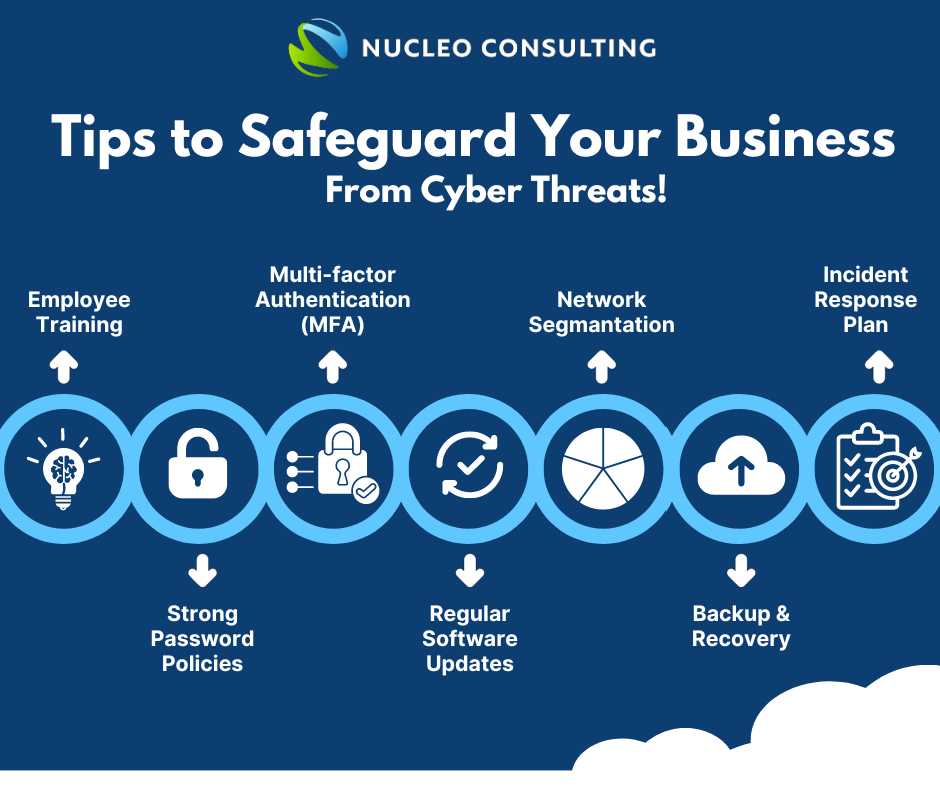ONE CLICK Is All Takes To Ruin Your Business
[2 mins read]
We are now in a digital era where businesses rely heavily on technology to operate effectively. While robust cybersecurity measures are essential, it is important to recognize that humans are often the weakest link in this cyber defense chain. One wrong click is all it takes to open the floodgates to disaster.
The Rising Cases of Cyber Attacks
Cyber attack cases have surged in recent years. From ransomware to phishing scams, malicious actors exploit vulnerabilities in our interconnected systems. The sophistication of these attacks continues to evolve as technology advances, making it increasingly challenging for businesses to stay ahead.
The Human Factor: A Vulnerable Link
Despite firewalls, encryption, and other cybersecurity solutions in place, it only takes one click to jeopardize an entire organization. Here’s how it may happen:
- Phishing Emails: Cybercriminals craft convincing emails that appear legitimate. An unsuspecting user clicks on a seemingly harmless link (URL) or downloads an attachment, unknowingly granting access to hackers to access sensitive data.
- Malicious Links: Clicking on malicious links may bring the user to a fake login page, where the login credentials get stolen once the user tries to log in. Additionally, clicking on malicious links may also infest your computer with harmful scripts that compromise system security, steal sensitive information, or grant access to your organization’s network.
- Social Engineering: This refers to attackers manipulating human psychology. They pretend to be colleagues, vendors, clients, or someone the users know, tricking the unwary employee into disclosing confidential information or transferring funds.
Safeguarding Your Business

You can never be too cautious against cyber attacks. Here are some cybersecurity tips to safeguard your business from potential threats:
- Employee Training: Invest in comprehensive cybersecurity training for all employees. Teach them to recognize cyber attacks such as phishing emails, suspicious links, and social engineering. Regular workshops and simulated phishing exercises can reinforce awareness too.
- Strong Password Policies: Enforce strict password policies. Encourage employees to use complex passwords, change them regularly, and avoid reusing them across different accounts. It is also important to emphasize the right ways to store passwords or introduce password managers to them. Remember, relying on pen and paper won’t suffice here.
- Multi-Factor Authentication (MFA): Implement MFA wherever possible, as it adds an extra layer of security on top of your strong passwords. Even if a hacker obtains login credentials, they will have to provide more evidence to verify their identity, such as a unique code sent to your phone.
- Regular Software Updates:
Outdated software is the prime target for cybercriminals. Consistently updating operating systems, software, applications, and security patches can efficiently reduce the risk of a cyber attack by addressing any vulnerabilities. - Network Segmentation: Segment your network effectively. Isolating critical systems from less sensitive ones may help to mitigate the impact in case of a breach. Remember the old saying: “Don’t put all your eggs in one basket.”
- Backup and Recovery: It is important to back up your data regularly and test the restoration process. In case of a cyber-attack, having reliable backups allows swift restoration of your business operations, minimizing downtime and ensuring business continuity.
- Incident Response Plan: An Incident Response Plan (IRP) is a set of rules set out by the company, that indicates what to do if there is a cybersecurity issue. It helps the business to handle the problem quickly and minimize the damages. No matter the size of the organization, developing a clear incident response plan is crucial. It is also important to let employees know who to contact, how to isolate affected systems, and how to communicate with stakeholders when an incident happens.
Balancing Technology and Human Vigilance
As we always say, technology is a double-edged sword. While it empowers businesses, it also exposes vulnerabilities. Robust cybersecurity solutions are essential, but they must work in hand with employee vigilance. Equip employees of all levels with cybersecurity knowledge and foster a cybersecurity-conscious culture within the organization. Remember, one click can make or break your business.
In this digital age, cybersecurity is everyone’s responsibility. By staying informed, vigilant, and proactive, we can collectively safeguard our businesses against the ever-evolving threat of cyber attacks.
IT Tips | Cyber Threats | Cybersecurity | Ransomware | Phishing | Data security | Cybersecurity Training
